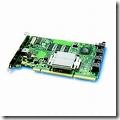
Intel RAID Controller Troubleshooting Guide: Overview
 In the unlikely event you encounter issues, this guide will help you troubleshoot and identify possible problem areas. If you are unable to resolve a problem using this guide, please follow these steps:
In the unlikely event you encounter issues, this guide will help you troubleshoot and identify possible problem areas. If you are unable to resolve a problem using this guide, please follow these steps:
1. Visit http://support.intel.com/support/motherboards/server and choose the model of the
RAID controller you are using. This site will contain the latest information of known
issues and solutions.
2. If you are unable to resolve the issue, send an e-mail to Intel Customer Support using
this form: http://support.intel.com/support/motherboards/server/server_form.htm
3. Contact Intel Customer Support using one of the numbers listed here:
http://www.intel.com/support/9089.htm
This guide will help you collect the data we will need to help you resolve your issues. Each
issue includes suggestions that may help you, and a list of information we will need to know you if you need to call us. Please visit the Intel Support website for updated versions of this
document at http://support.intel.com/support/motherboards/server
Server boards, RAID controllers, and many other computer devices use programmable flash
memory parts to store BIOS or firmware code. Please visit the support site for your server
board and the RAID controller you are using and download and install the latest BIOS and
firmware for the server board and RAID card. Intel® server board and RAID card downloads
can be found at: http://support.intel.com/support/motherboards/server.
Your Intel® RAID Controller may include several LEDs that can aid in troubleshooting your
system. Please refer to your specific RAID controller’s documentation for location and purpose
of the LEDs. These LEDs may signal the following events:
• Indicate that the controller is online (i.e., installed correctly).
• Indicate that the controller is in Firmware Recovery Mode.
• Indicate activity on the SCSI Channel.
• Indicate Bus Master DMA transfers.
These LEDs may be referred to later in this document. In addition, the controller may emit a
series of beeps. Refer to your specific RAID controller’s documentation for definition of the
beep code. These beep codes may signal the following events:
• State of the controller upon boot-up.
• A change in the state of an array.
• A change in the controller’s environment status (during normal operation).
• A hardware failure.
A series of beep codes may be audible during POST or during RAID array event. Some RAID
controllers emit a 1-3 beep code during POST, signifying normal operation. The server board
or other add-in peripherals may also emit beep codes. Refer to the documentation for your
RAID controller, server board, or add-in components for specific beep code information.
Troubleshooting Overview
Intel® RAID Controller Troubleshooting Guide
1. My server will not power on
2. Upon booting, my server starts beeping
3. My system appears to power on, however there is no video
4. Some of my hard drives show up during POST and some do not
5. My RAID controller has an issue not addressed above
Additional Questions and Answers
1. How do I update the firmware?
2. I am unable to complete the firmware update, I get a message that the firmware is intact or the system hangs during when entering StorCon
3. I do not see the zero channel RAID card / Modular RAID on Motherboard (MROMB) card during POST
4. How do I disable the integrated components
